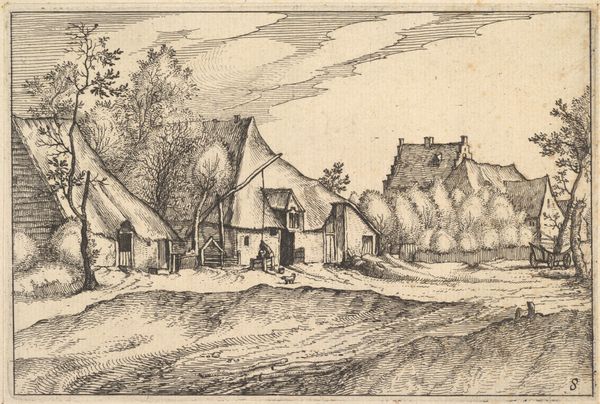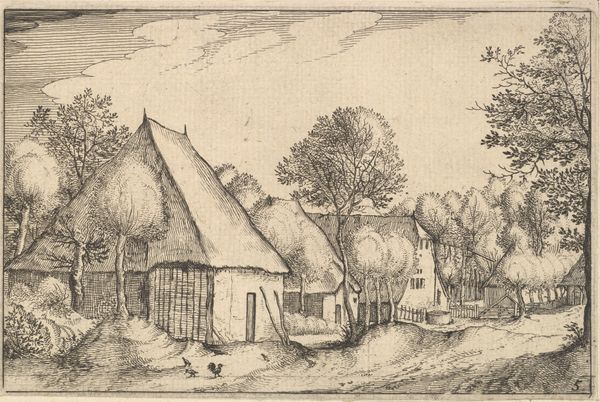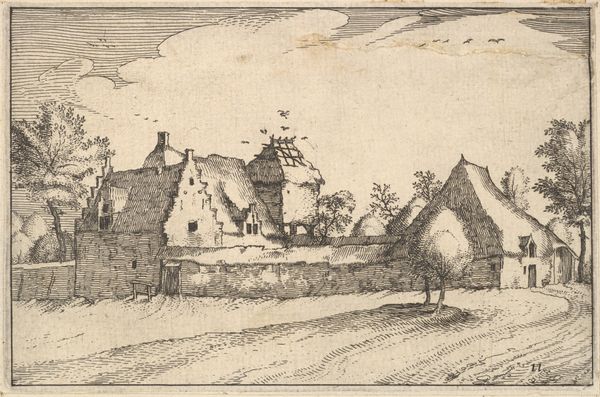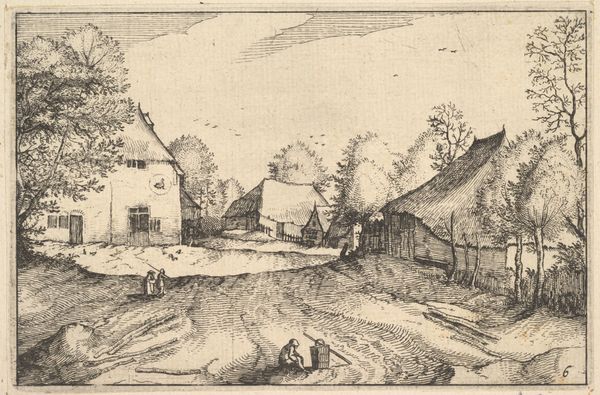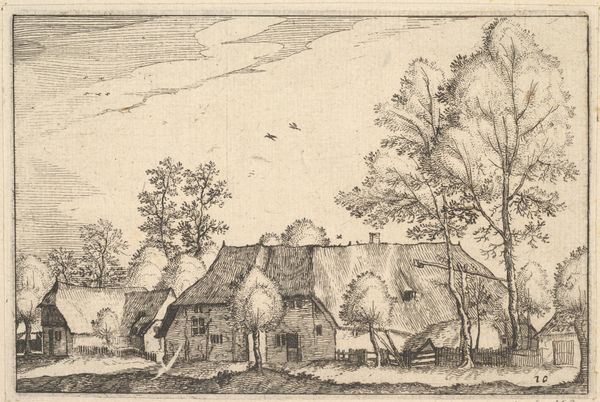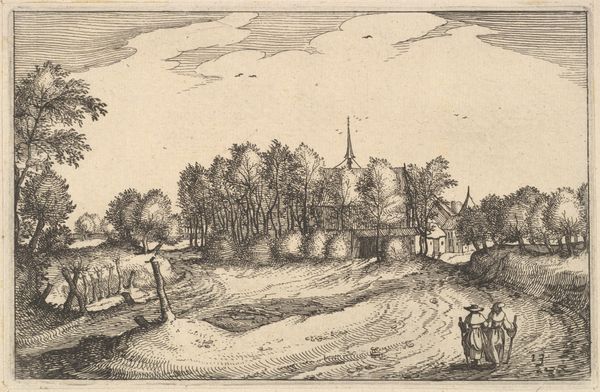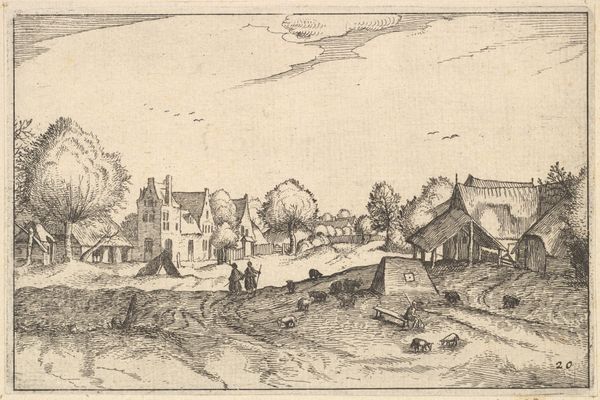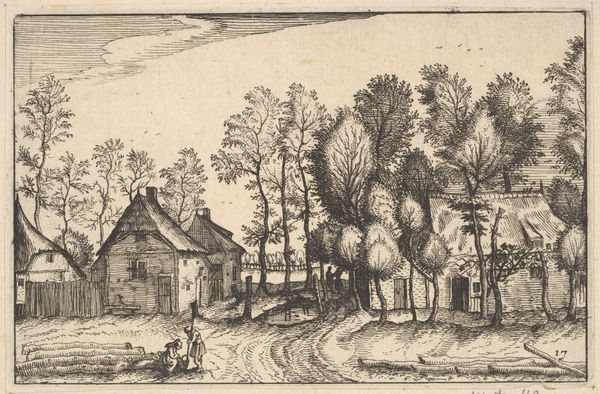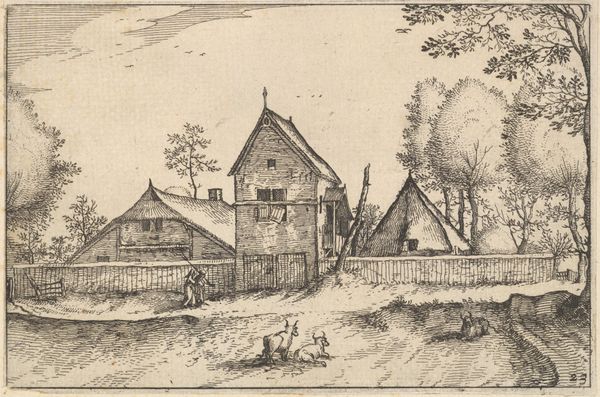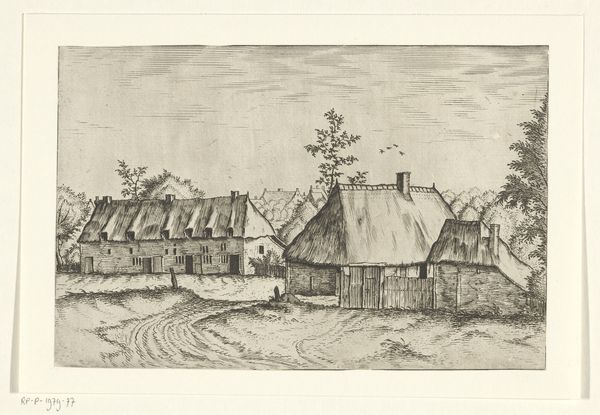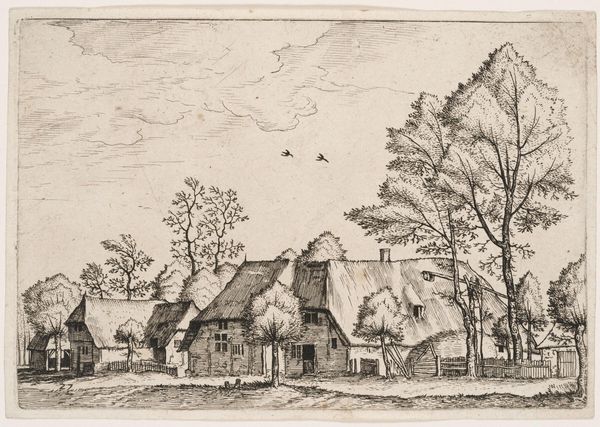
Large Sheds, plate 21 from "Regiunculae et Villae Aliquot Ducatus Brabantiae" 1605 - 1615
0:00
0:00
drawing, print, etching
#
drawing
#
medieval
# print
#
etching
#
landscape
#
northern-renaissance
Dimensions: Sheet: 4 1/8 × 6 3/16 in. (10.5 × 15.7 cm)
Copyright: Public Domain
Curator: Before us we have "Large Sheds, plate 21 from 'Regiunculae et Villae Aliquot Ducatus Brabantiae'," an etching by Claes Jansz. Visscher, likely created between 1605 and 1615. Editor: Oh, it’s like stumbling upon a scene from a fable. There’s something incredibly raw and immediate about the scene, almost like I’ve found the exact moment when a story unfolds in some old farmland—simple lives sketched out with deceptively subtle depth. Curator: Visscher’s mastery is in capturing everyday scenes, and in this series, he's giving us glimpses into the villages and country life of the Duchy of Brabant. This etching presents what seems to be a typical landscape with these "large sheds," perhaps barns or outbuildings, as a focal point. Editor: I am struck by how the textures seem almost tactile. The thatched roofs are so intricately detailed, almost coarse, against the surprisingly smooth, subtly graded sky above where little birds animate this little village that feels almost medieval, in its quiet isolation. Is it the light that draws our eyes to the buildings? The landscape is inviting, even, for its time and feels somehow timeless, with only some rudimentary activity suggested, nothing like urban bustle or activity. Curator: Those birds are significant, I believe, as carriers of omen. And consider also how he uses line and form to direct our gaze, a journey beginning at the foot of the path with those travelers there and on through those slightly exaggerated details of each building. Each structure offers its individual story that suggests a larger symbolic framework. The landscape also might echo how land determined wealth. Editor: You know, seeing the image described that way allows me to look beyond the pastoral charm and imagine the economic and social weight these simple scenes once carried. Curator: Exactly. Visscher takes these functional structures and imbues them with significance beyond mere documentation. Editor: It is also about that time when many discovered the new way to print that facilitated these little prints as the medium exploded. You feel connected by that to those earlier observers. It's a humble moment, to see that past represented in that moment captured in the landscape with those huts, a humble landscape now a precious landscape through his etching of the past, as print became prolific and the ability to disseminate ideas became a little bit more democratic through printed images. Curator: I couldn’t agree more. What appears at first to be a quaint country scene turns out to be a detailed portrait of an era. It brings it into sharp focus! Editor: Absolutely—making the mundane resonate across centuries, an evocative window.
Comments
No comments
Be the first to comment and join the conversation on the ultimate creative platform.
